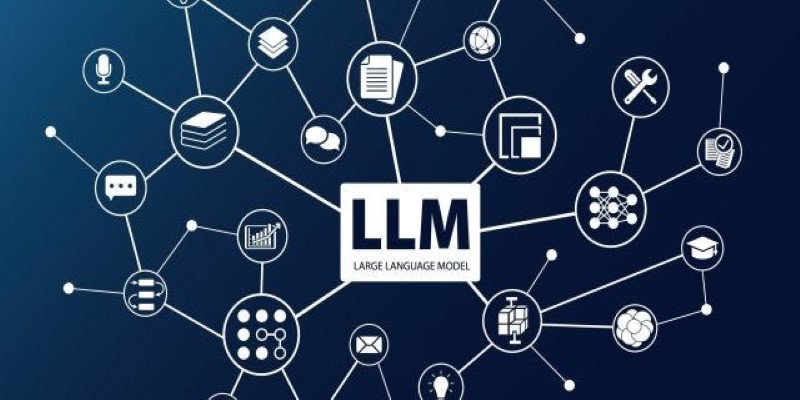Advertisement
The way websites are built has shifted more in the last five years than it did in the previous twenty. Web development used to be a domain of coding experts and teams of front-end and back-end engineers working together to bring digital experiences to life. Now, AI is quickly redrawing the rules. One tool leading this shift is MetaGPT.
Unlike traditional code generators or website builders, MetaGPT isn’t just about automation — it simulates the logic and flow of human thought when developing websites. The result? Faster production, reduced costs, and fewer limitations for teams, freelancers, and solo creators alike.
MetaGPT is not your standard code-assist tool. It's designed to function like a virtual software team — capable of planning, designing, coding, and even reviewing. It builds on the GPT framework but adapts it specifically for web and software development tasks. Instead of waiting for instructions line by line, it interprets project goals, sets up its workflow, breaks down development tasks into smaller units, and carries them out in a structured way.
What makes it stand out is how it brings together multiple “roles” within one system. MetaGPT simulates the interaction between a product manager, a software architect, a front-end developer, and even a QA tester. This means it doesn't just write code but considers broader application design, feature requirements, usability, and deployment strategy. It’s essentially compressing the process of a full development sprint into minutes — while still producing high-quality output.
It can be given a simple prompt, like “Build a job board for remote developers,” and will respond by creating a full directory of code, markdown files, documentation, and test cases. The experience feels less like using a tool and more like working with an entire virtual team that doesn’t sleep.
One of MetaGPT’s strongest suits is speed. What usually takes weeks — defining requirements, setting up architecture, implementing features, testing — can be condensed into a few hours. This isn’t just about cutting corners; the speed is made possible by eliminating back-and-forth communication delays, decision fatigue, and inconsistent handovers across teams.

Freelancers and small startups can especially benefit. A solo developer using MetaGPT can build apps or websites that previously required a team. It also reduces technical entry barriers. Non-developers with ideas — founders, marketers, or designers — can describe what they need in plain language, and MetaGPT turns those ideas into working codebases.
Another advantage is clarity. MetaGPT produces not only code but documentation and test cases that reflect a deeper understanding of the project. This is a huge improvement compared to most auto-generated code, which often lacks context or proper structure. With MetaGPT, the output is easier to understand and maintain, even for humans who need to pick it up later.
It also adapts to various stacks. Whether someone needs a Python backend or a React frontend or wants to experiment with newer frameworks like Svelte or Astro, MetaGPT can respond with versatile code tailored to specific requirements. And because it simulates role-based communication internally, it can flag issues before they arise — like feature overlap or missing dependencies — just as a real team might during a planning meeting.
MetaGPT isn't just about making things faster. It's shaping a new way of thinking about software creation. The traditional workflow — ideation, planning, development, testing, release — is getting compressed into a single AI interaction loop. This shifts the focus from execution to ideation and problem-solving. Developers spend less time doing mechanical work and more time guiding direction and strategy.
In larger companies, MetaGPT can integrate into team workflows as a collaborative assistant. It can draft initial project layouts, provide recommendations, or stress-test existing logic. For agencies, it allows rapid prototyping for client work without burning hours. And for learners or students, it offers a sandbox to build, break, and rebuild applications without requiring years of experience.
One area where MetaGPT shows promise is localization and adaptation. If a developer builds a product in English and wants it replicated for another region, MetaGPT can translate not only the language but also the context and user expectations — adapting layouts, flows, and UI elements based on cultural norms. That's a significant leap from older AI that mostly relied on keyword matching.
Another shift is in how project ownership is viewed. With tools like MetaGPT, the line between product owner and builder is blurring. A single person with a strong idea can now create an MVP, test it with users, iterate, and scale — all without needing to know how to code every part from scratch.
MetaGPT isn’t without its limits. It still depends on strong prompts and clear input. If the initial description is vague, the results can be unfocused or generic. It also doesn’t replace human creativity or business insight. While it handles logic and execution, it can’t fully grasp emotional design, brand personality, or user psychology.

Code generated by MetaGPT, though clean and logical, may still need review, especially for edge cases, scalability, or compliance. It's a solid starting point but not always a finished product. Developers still need to debug, refactor, and adapt outputs for real-world use.
There are questions about intellectual property. If AI writes your code, who owns it? Most platforms pass ownership to users, but legal rules are still catching up. Another concern is over-reliance. New developers might lean too much on AI and miss key thinking skills needed for long-term growth.
These issues aren't blockers — they're signs of change. Like calculators didn't kill math, MetaGPT won't replace programming. It shifts the focus from syntax to systems thinking. Future developers may spend more time reviewing, planning, and shaping user experiences rather than writing boilerplate code.
MetaGPT is reshaping web development by making it faster and more efficient. Solo creators get the benefits of a full team, while businesses can cut development time without losing quality. It handles complex tasks with structured, context-aware intelligence, shifting the developer's role from coder to strategist. The future may rely less on writing code and more on guiding AI to build clear, functional solutions based on ideas and goals.
Advertisement

Delta partners with Uber and Joby Aviation to introduce a hyper-personalized travel experience at CES 2025, combining rideshare, air taxis, and flights into one seamless journey

Discover how the NLP course is evolving into the LLM course, reflecting the growing importance of large language models in AI education and practical applications

Why analytics is important for better outcomes across industries. Learn how data insights improve decision quality and make everyday choices more effective

Looking for the best Langchain alternatives in 2025? Explore 8 top LLM frameworks that offer simpler APIs, agent support, and faster development for AI-driven apps

GenAI helps Telco B2B sales teams cut admin work, boost productivity, personalize outreach, and close more deals with automation

Discover strategies to train employees on AI through microlearning and hands-on practice without causing burnout.

How Toyota is developing AI-powered smart factory tools in partnership with technology leaders to transform production efficiency, quality, and sustainability across its plants

Google debuts new tools and an agent protocol to simplify the creation and management of AI-powered agents.

How AI-powered genome engineering is advancing food security, with highlights and key discussions from AWS Summit London on resilient crops and sustainable farming

Discover why global tech giants are investing in Saudi Arabia's AI ecosystem through partnerships and incentives.

Why Gradio stands out from every other UI library. From instant sharing to machine learning-specific features, here’s what makes Gradio a practical tool for developers and researchers

Turn open-source language models into smart, action-taking agents using LangChain. Learn the steps, tools, and challenges involved in building fully controlled, self-hosted AI systems